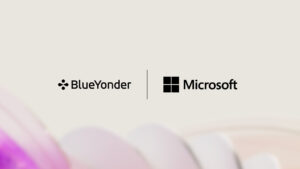Innovation does not happen by accident
Looking to the future innovation needs to be proactive and systemic in order to tackle the challenges in health
At the end of 2015, I had the pleasure of attending and speaking at three significant conferences, all focused on innovation in health. The first one was the Cleveland Clinic Medical Innovation Summit, which I wrote about in my last blog. The second event was Exponential Medicine, which covered both the scientific and societal innovations that have to happen for the reinvention and future of health and medicine. The third was Improving Healthcare, which focused on the whole process of improving the efficiency and effectiveness of the healthcare environment.
Reflecting on my experiences at these events, it was clear to me that innovation doesn’t happen by accident. To tackle the challenges of health systems the world over—whether it’s meeting the ever-increasing demand for health services, engaging patients in taking better care of themselves, adapting to new payment models, or getting more insight from data—now in 2016 more than ever we need to innovate systemically. By that, I mean we need proactive methodologies that make innovation inherent in everything we do. And we need the results of our innovations to benefit not just a few, but to make an impact on a broad scale.
With all that in mind, it’s exciting to think about how the three bold ambitions that Microsoft is focusing on can help foster the systemic innovation needed in health:
Bold ambition 1: Making computing more personal
Innovation needs to be personal. Only if the benefits of technology are felt personally—whether it’s an easy, highly productive user experience, better interactions between the care team and patients, or improved individual health and fitness outcomes—will its potential to transform healthcare be realized.
Bold ambition 2: Building the intelligent cloud
Innovation needs to scale. It needs to be repeatable to make a broad impact. An intelligent cloud enables scalability of solutions so they can benefit more people. For example, Mackay Memorial Hospital in Taipei, Taiwan, built a set of cloud-based, Microsoft Power BI dashboards for clinical key performance indicators. The solution is immediately benefiting the hospital in Taipei by helping it improve care quality and efficiency. And the dashboards are being replicated and scaled via the cloud to fellow hospitals across the country—which will extend the benefits of improved healthcare to more people in Taiwan.
Bold ambition 3: Reinventing productivity and process
Innovation isn’t about technology for technology’s sake. Innovation is about how it empowers people to reinvent productivity and process. In other words, don’t be distracted by the shiny object. Think about what you can do with it. For example, Microsoft HoloLens is exciting, flashy technology, but its real value is how it’s opening up new possibilities. At Case Western Reserve University, they’re reinventing education for medical students and helping prepare the next generation of doctors for the future of healthcare with HoloLens.
As I look at the market, I’m excited by the breadth and creativity of the innovation I see around every corner in every country I travel to. I’m especially excited by examples of systemic innovation, one being the NHS Innovation Accelerator. Rather than expecting innovation to happen by accident, they’ve put in place a system that institutionalizes it. I look forward to seeing many more examples like this in 2016 and beyond.
How are you innovating systemically to transform healthcare? Let us know via email, Facebook, or Twitter. And please also reach out with any questions or comments.





